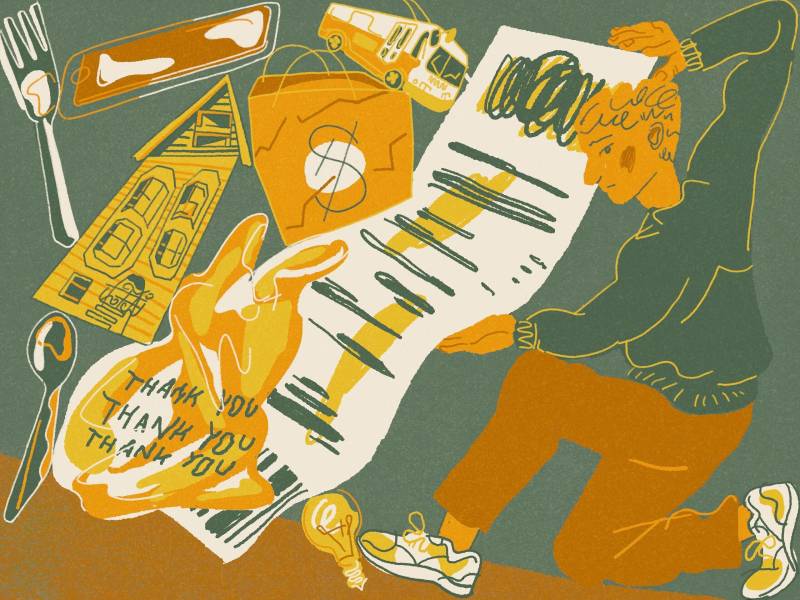This guide is part of the KQED News series What to Do After a Layoff.
After a layoff, some of your friends or family members may start quizzing you about your “next moves” around job hunting. And in some cases, a person can use this next period as a chance to take a break — especially if they’ve been offered a severance package.
But for many folks, the primary concern after a layoff is still around how to save money — as fast as possible — without a regular source of steady income.
KQED spoke to money-saving expert Andrea Woroch — whose personal finance advice for families has appeared on CNN and Good Morning America and in The New York Times and Forbes — about the various ways Bay Area residents can lower their household spending.
Keep reading for the practical steps you can take immediately to cut your expenses after losing your job — including some you might not expect. The advice below might look like a lot — or feel especially overwhelming when you’re also trying to deal with other practical and emotional fallouts that come with losing a job. But remember: Hopefully this period will be a short one. Try tackling one tip or approach at a time.

1. Take stock of your spending
“A lot of people really don’t have a dialed-in budget” for their household spending, said Woroch. If that’s you, and you’ve been affected by a job loss, “the first step you really need to take is to assess your spending,” she advised.
By figuring out where your money is going every month, you’ll be better able to identify the areas where you could start cutting back straightaway, says Woroch. To do this, grab your credit card and bank statements for the last few months, and make a list of the recurring purchases.
For “fluctuating expenses, like food, entertainment and gas,” Woroch recommended you make an estimate of how much you’re spending on those things. (An effective way is to find the total you spent on a certain type of expense — for example, eating out — and then divide that by the number of times you did it in the month.)
Consider using a free platform like Google Sheets to make a simple budget document that can add up your expenses. “This is going to give you a clear picture of where your money is going,” said Woroch. “And now, you can create an action plan to start cutting costs.”
2. Work out where you can possibly lower your expenses
To make the process of establishing a budget feel manageable, says Woroch, focus first on the nonessentials: Think expenses like entertainment (movie tickets, eating out) or clothing. By removing those — while you’re in this post-layoff situation — you’ll land on “more of a bare-bones budget, of just your essentials.”
- Read more layoff advice in our What to Do After a Layoff series
But once you have that reduced budget, says Woroch, you may still find areas within your slimmed-down budget where you can save. “I think a lot of people focus most on cutting out those discretionary purchases and maybe limiting the impulse shopping and the ‘for fun’ purchases,” said Woroch, “but even on the essentials there are things that you can do. So now that you have everything outlined, you want to start making your cuts.”
Don’t overwhelm yourself by trying to do this all at once, cautioned Woroch: “It’s not like you have to do it all in the same day.” If you’re finding yourself feeling deluged by this process, “maybe spread it out and try to tackle one category each day,” she said.




